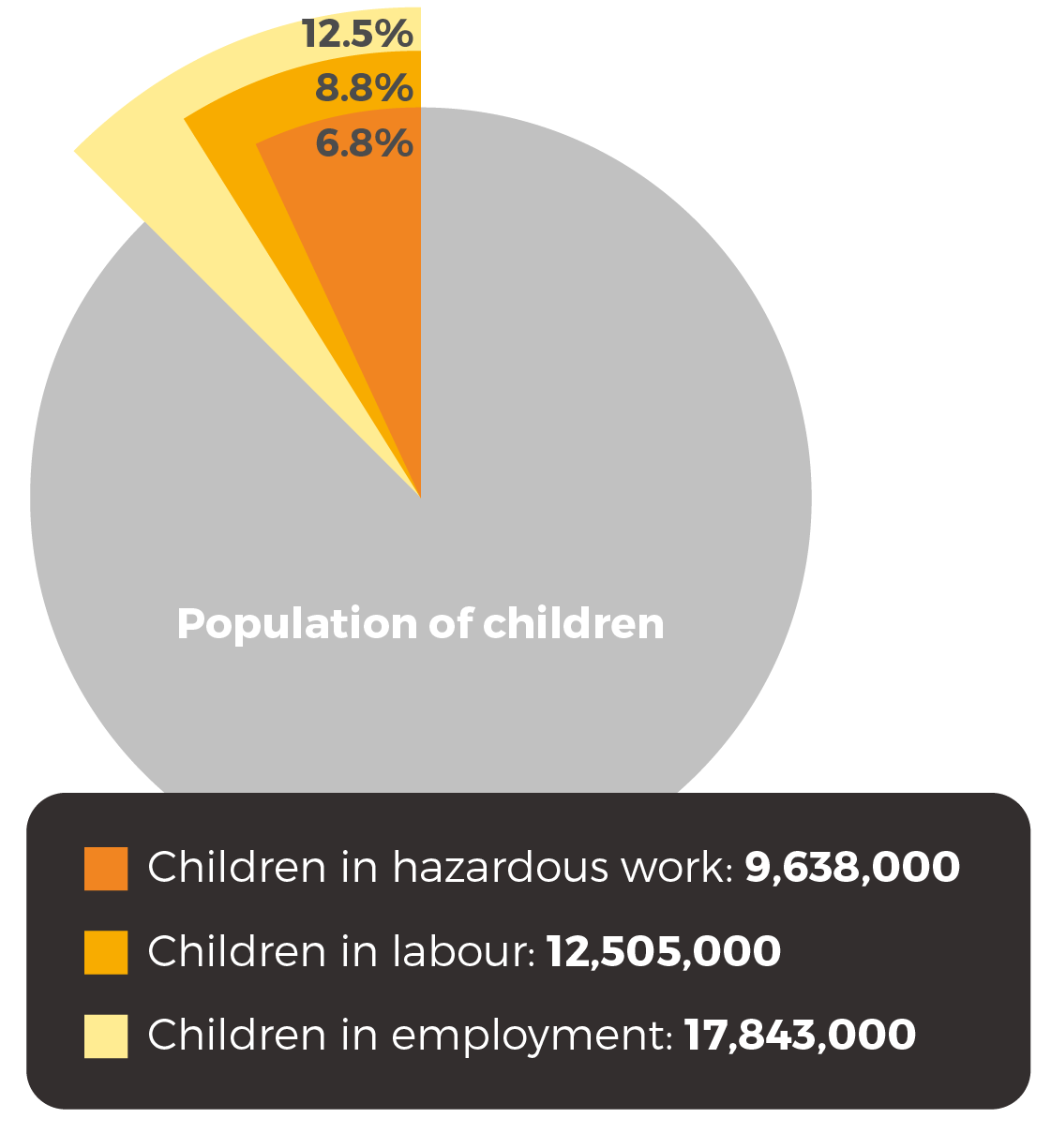Published in October 2015 · Updated in May 2016
Child labour in agriculture
Children all over the world are being exploited, prevented from going to school, or pushed into work that endangers their health and normal development. In many regions, child labour is found mainly in agricultural contexts, where fatalities, severe accidents and diseases are common.
Explore this InfoStory to learn more about this problem, its impact on children's lives and how it can be eliminated.
A closer look at child labour
Child labour is a worldwide phenomenon. Millions of children around the world carry out work that harms their well-being, safety and health, and hinders their education, development and future livelihoods.
Where is it happening?
Choose a region to see how many children are in labour and doing hazardous work.
Child labour exists everywhere, including Europe and North America, but data for these regions are incomplete.
Asia and the Pacific

Sub-Saharan Africa

Latin America and the Caribbean

Middle East and North Africa

The nature of child labour
Nearly 60% of all child labourers work in agriculture – a staggering 98 million of them. Usually, they are working, unpaid, with their family.
Agriculture is one of the most dangerous sectors to work in at any age, and even more dangerous for children. It is largely unregulated and many agricultural workers are not organized in unions or producers’ organizations, making the agriculture sector particularly vulnerable to labour abuses.
Growing pains
Children working in agriculture may have to use heavy machinery or sharp tools, be exposed to pesticides or harmful insects, and work for long hours and in extreme weather conditions.
Tap on the links to discover the hazards this girl is exposed to when working with tobacco.
Arms and legs
She uses sharp heavy tools that are too big for her hands. This means she’s at risk of bruises and cuts while she works. Open wounds can lead to infection and serious illness.
Back
She spends a lot of her day carrying heavy loads, such as water pails and bundles of tobacco. Her back hurts almost constantly and it's likely that she will end up with permanent back problems as an adult.
Brain
Nicotine is a neurotoxin, as are some of the chemicals used in the soil and sprayed on the tobacco plants. Prolonged exposure can harm her growing brain and make it more difficult for her to learn in the future.
Eyes and mouth
Chemicals and pesticides make her eyes itch and sting and cause her mouth to get puffy and red.
Feet
She works without shoes, meaning she could be bitten by a snake or get infected by parasites living in the soil or water.
Head and neck
She spends a lot of time climbing up and down ladders, hanging tobacco from the roof in drying barns. With no basic safety measures in place, she’s at risk of severe injury or even death if she slips and falls.
Heart
Sometimes her heart beats very fast and she doesn’t know why – it’s a frightening feeling. It’s actually caused by the nicotine that she absorbs through her skin as she works with the tobacco plants.
Lungs
The dust that she inhales during the tobacco drying and grading process makes it difficult for her to breathe.
Skin
During her work, her skin comes into contact with many different chemicals, as well as nicotine from the tobacco plants. This means her skin is usually red and itchy, and she gets regular breakouts of hives or lesions.
Stomach
Nicotine absorbed through the skin causes a loss of appetite and it often makes her nauseous. When she's been exposed to it for too long she sometimes vomits.
Perpetual problems
Forty-four per cent of children in child labour are between the ages of 5 and 11. Some of these children do not go to school at all. Others combine school and work, but this often has a negative impact on their school attendance and performance.
Without schooling, these children lose out on the possibility to improve their future choices and find decent work. Their experience may lead to a cycle in which their own children end up in child labour.
What drives children into agricultural labour?
In many rural areas, children work for their survival and to meet the family’s need for cash, food, shelter and clothing. But the factors leading to child labour may be many and intertwined.
Eradicating child labour
There are 30 million fewer children in agricultural child labour today than in 2008. But keeping children out of child labour is a complex task and governments alone cannot break the cycle.
The way forward
Ensuring children are kept away from child labour and have access to free, quality education opens up a myriad of possibilities for them to define their own futures, to find decent work and to change their communities for the better.




















